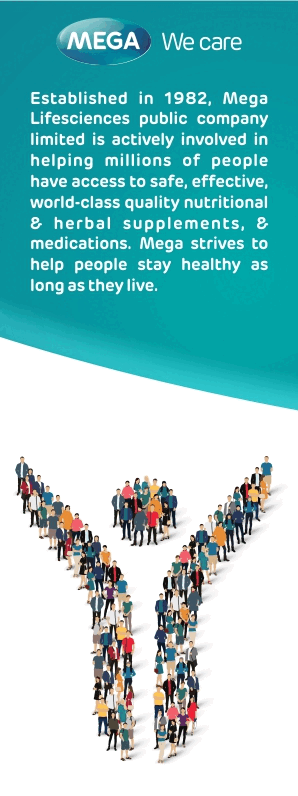Households' willingness to pay and associated factors for the nutrition services provided to pregnant women at maternity waiting homes in East Wollega, Western Ethiopia
Willingness to pay and associated factors for nutrition services at maternity waiting homes
DOI:
https://doi.org/10.69614/ejrh.v16i3.749Keywords:
maternity waiting home, willingness to pay, associated factors, Ethiopia.Abstract
Background: In Ethiopia, most of the maternity waiting homes had no budget allocated from government funds and thus have to rely on communities’ contribution. However, the willingness of the household to pay for the nutrition service has not been the subject of many studies up to this point.
Objective: Thus, this study estimated maximum households’ willingness to pay and associated factors among households in East Wollega Zone of Oromia National regional state, Ethiopia, 2022.
Methodology: A community based cross sectional study using double bounded dichotomous choice contingent valuation method was done on 845 households. Data was entered using Epi-Data version 3.1 and analyzed using SPSS for Windows version 20. Binary and multivariable logistic regression analysis were performed. The associations between explanatory variables and outcome variable were presented by an Adjusted Odd Ratio and confidence interval.
Results: The annual median maximum willingness to pay was 15ETB (US$0.55) per household. Marital status (AOR=3.533, 95% CI=1.007-12.39) and average monthly income (AOR=3.287, 95%CI=1.194-9.049). Moreover, distance from the health facility (AOR = 3.64, 95%CI = 1.256-10.55) and availability of food (AOR=3.714, 95%CI=1.331-10.364), enough beddings (AOR=5.353, 95%CI=2.207-13.010) and cooking utensils (AOR=4.044, 95%CI=1.353-12.088) at a housing facility were found to be predictors.
Conclusion and Recommendation: The households’ maximum willingness to pay for the program is higher than the currently applied membership fee. Demographic, socioeconomic and institutional factors affect households’ willingness to pay. Therefore, health facility managers should avail supplies and equipment at a housing facility to sustain the provision of the service.
References
2. Pell C, Meñaca A, Were F, Afrah NA, Chatio S, Manda-Taylor L, et al. Factors affecting antenatal care attendance: results from qualitative studies in Ghana, Kenya and Malawi. PloS One. 2013;8(1):e53747.
3. Stekelenburg J, van Lonkhuijzen L, Spaans W, Van Roosmalen Jo. Maternity waiting homes in rural districts in Africa; A cornerstone of safe motherhood? Curr WOMENS Health Rev. 2006;2(4):235.
4. Gaym A, Pearson L, Soe KW. Maternity waiting homes in Ethiopia–three decades experience. Ethiop Med J. 2012;50(3):209–219.
5. van Lonkhuijzen L, Stekelenburg J, van Roosmalen J. Maternity waiting facilities for improving maternal and neonatal outcome in low-resource countries. Cochrane Database Syst Rev. 2012;(10).
6. Organization WH. Maternity waiting homes: a review of experiences. Geneva: World Health Organization; 1996.
7. Control C for D, Prevention. A guide to conducting household surveys for Water Safety Plans. Atlanta US Dep Health Hum Serv. 2008;
8. Sakai E, Uchida Y. A study on the use of ‘contingent valuation’as a method for economic evaluation of the environment. Ritsumeikan J Asia Pac Stud. 2013;32.
9. Aizuddin AN, Sulong S, Aljunid SM. Factors influencing willingness to pay for healthcare. In: BMC Public Health. Springer; 2012. p. A37.
10. Aleme A, Girma E, Fentahun N. Willingness to pay for insecticide-treated nets in Berehet District, Amhara Region, Northern Ethiopia: implication of social marketing. Ethiop J Health Sci. 2014;24(1):75–84.
11. Scott NA, Vian T, Kaiser JL, Ngoma T, Mataka K, and Henry EG, et al. listening to the community: Using formative research to strengthen maternity waiting homes in Zambia. PlOS One. 2018;13(3):e0194535.
12. Vian T, White EE, Biemba G, Mataka K, Scott N. Willingness to pay for a maternity waiting home stay in Zambia. J Midwifery Womens Health. 2017;62(2):155–162.
13. Unicef. Innovative approaches to maternal and newborn health. Compendium of case studies. N Y UNICEF. 2013;
14. Agago TA, Woldie M, Ololo S. Willingness to join and pay for the newly proposed social health insurance among teachers in Wolaita Sodo town, South Ethiopia. Ethiop J Health Sci. 2014;24(3):195–202.
15. Sambo L, Chatora R, Goosen E. Tools for assessing the operationality of district health systems. Brazzaville World Health Organ Reg Off Afr. 2003;
16. Gyrd-Hansen D, Jensen ML, Kjaer T. Framing the willingness-to-pay question: impact on response patterns and mean willingness to pay. Health Econ. 2014;23(5):550–563.
17. Melka SG. HOUSEHOLDS’ WILLINGNESS TO PAY FOR ENVIRONMENTAL Health Risk Reductions when there are Varying Degrees of Life Expectancy. Article. 2007; 1(July):41–3.
18. Nguyen PH, Hoang MV, Hajeebhoy N, Tran LM, Le CH, Menon P, et al. Maternal willingness to pay for infant and young child nutrition counseling services in Vietnam. Glob Health Action. 2015;8(1):28001.
19. Lori JR, Wadsworth AC, Munro ML, Rominski S. Promoting access: the use of maternity waiting homes to achieve safe motherhood. Midwifery. 2013;29(10):1095–1102.
20. Adisu A, Aleme A, Girma E, Fentahun N. ORIGINAL ARTICLE WILLINGNESS TO PAY FOR INSECTICIDE-TREATED NETS IN BEREHET DISTRICT , AMHARA REGION , NORTHERN ETHIOPIA?: IMPLICATION OF SOCIAL MARKETING. Ethiop J Health Sci. 2014;24:78–80.
21. Vermeiden T, Braat F, Medhin G, Gaym A, van den Akker T, Stekelenburg J. Factors associated with intended use of a maternity waiting home in Southern Ethiopia: a community-based cross-sectional study. BMC Pregnancy Childbirth. 2018;18(1):38.
22. Hou Z, Chang J, Yue D, Fang H, Meng Q, Zhang Y. Determinants of willingness to pay for self-paid vaccines in China. Vaccine. 2014;32(35):4471–4477.
23. Endalew GB, Gebretsadik LA, Gizaw AT. Intention to use Maternity Waiting Home among Pregnant Women in Jimma District, Southwest Ethiopia. Glob J Med Res. 2017;
24. Roeland L, Willem C. Delay in safe motherhood Chapter 3 Maternity waiting facilities for improving maternal and neonatal outcome in low- resource countries. Delay Safe Mother. 2011;(3):30–2.



